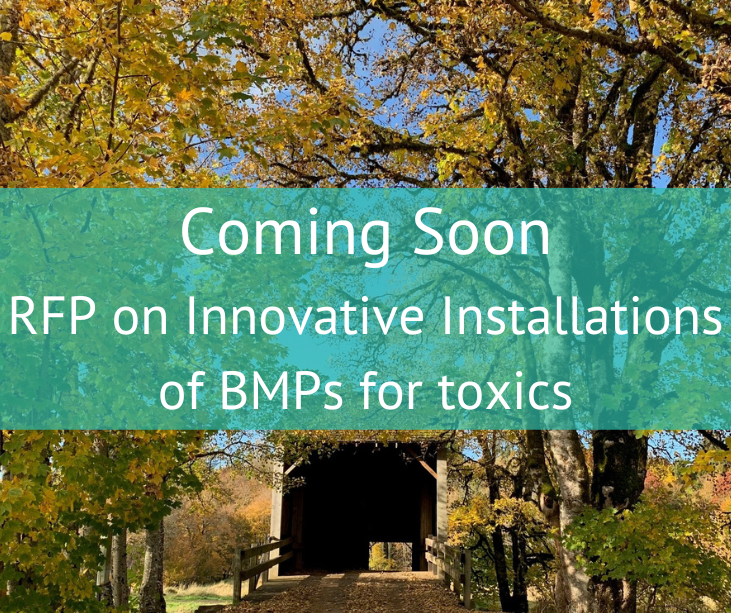An upcoming Stormwater Strategic Initiative Request for Proposals (RFP) opening in March, will offer funding opportunities to pilot and test innovative, or novel, best management practices (BMPs) in toxic hotspots and transportation areas for the removal of toxic contaminants including 6PPD, 6PPDQ, and/or PCBs. Other toxics may be suggested by proposers as well as proposals that address expanded geographic testing of current BMPs.
Most of the housing development in Puget Sound preceded modern stormwater regulation. Recently manufactured chemicals and legacy contaminants from our built environment and transportation corridors emerge frequently in stormwater runoff flowing into the streams, rivers, and marine waters of Puget Sound untreated. This creates an critical need for low-cost treatment options that can treat or remove priority chemicals from the waterways.
Successful proposals will support innovative techniques and pilot efforts for stormwater BMP installations in locations where tire wear particles, like 6PPD or 6PPDQ, are discharged to salmon-bearing freshwater bodies. Exploring new techniques and expanding testing to include emerging contaminants to see what kinds of techniques eliminate these toxic loads are needed to greatly improve water quality conditions in otherwise good quality habitat.
Additionally, a successful proposal can explore stormwater treatment in toxic hotspots to remove PCB loads in runoff to fresh or marine waters. While site remediation is outside the scope of this RFP, exploring and measuring the effectiveness of stormwater treatment technologies or Best Management Practices (BMPs) to reduce or eliminate PCB loads in runoff is within scope. Note that 6PPD, 6-PPDQ, and PCBs will be included in the solicitation and weighted equally. We encourage analysis of other contaminants of emerging concern or toxics that can be collected in the same sample, to show the efficacy of the methodology when possible.
Keep your eyes on the Stormwater SIL Investment webpage for more updates in February and March.
Why does it matter?
Salmon mortality syndrome in coho and steelhead is caused by a toxic chemical in tire wear particles called 6PPD and it’s derivative 6PPDQ. All tires contain this chemical which is meant to make tires last longer, but with every mile driven, every tire gradually breaks down and those particles are washed off the road surfaces and into stormwater runoff to streams where adult salmon are spawning and juvenile salmon are rearing at different times of the year. Cutting edge science has helped us understand the source of this problem, and we need to understand how to effectively and efficiently treat stormwater discharges to rivers and streams while alternative tire chemicals are researched.
Even though polychlorinated biphenyls (PCBs) have been banned from many electrical and construction materials since the 1980s, PCBs can still be found in some consumer products, in stormwater runoff, and from legacy contaminated sites (like the Lower Duwamish waterway). PCBs enter the marine food web where they bioaccumulate from zooplankton, through small to large fishes, and into marine mammals at the top levels of the food web including Southern Resident Orca Whales. We need more tools in the our stormwater BMP toolbox to treat stormwater and remove PCBs and 6PPD, and we need to know how well they work so that we can effectively implement Toxics in Fish strategies to improve and recover Puget Sound.

